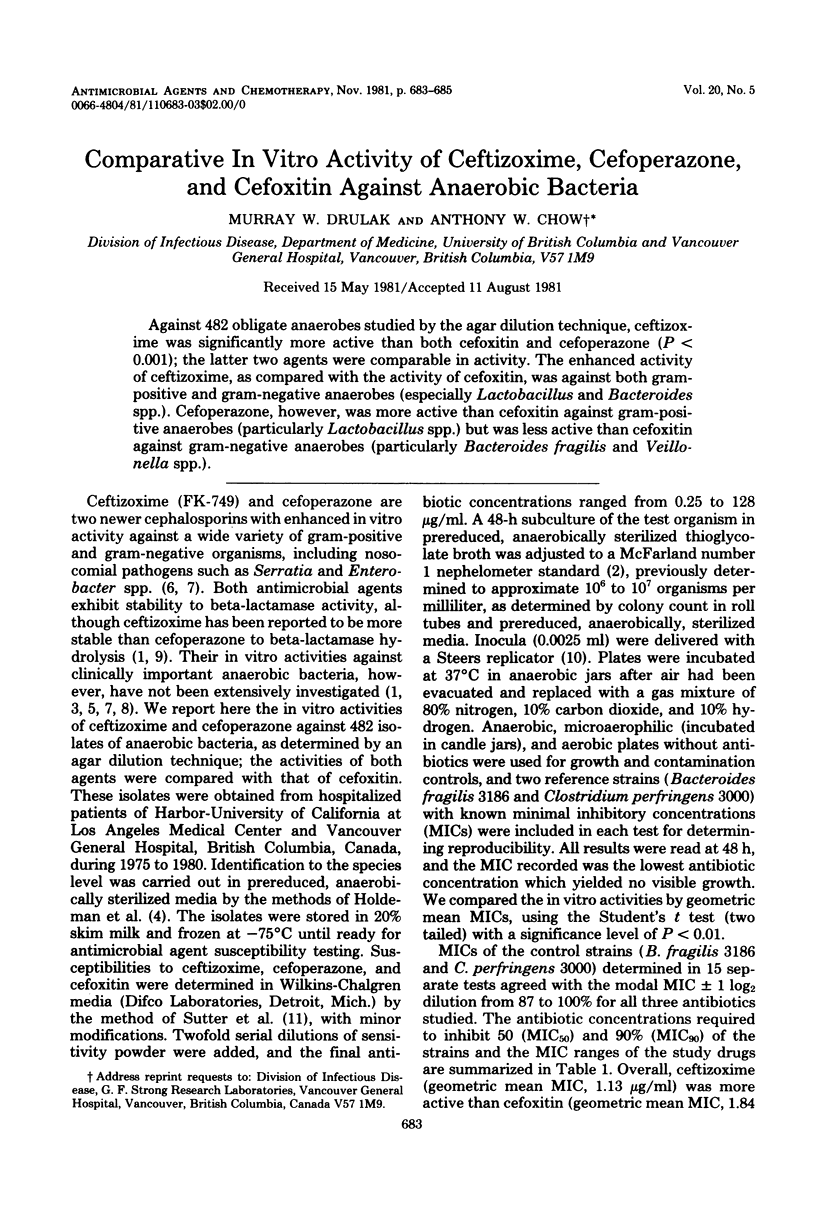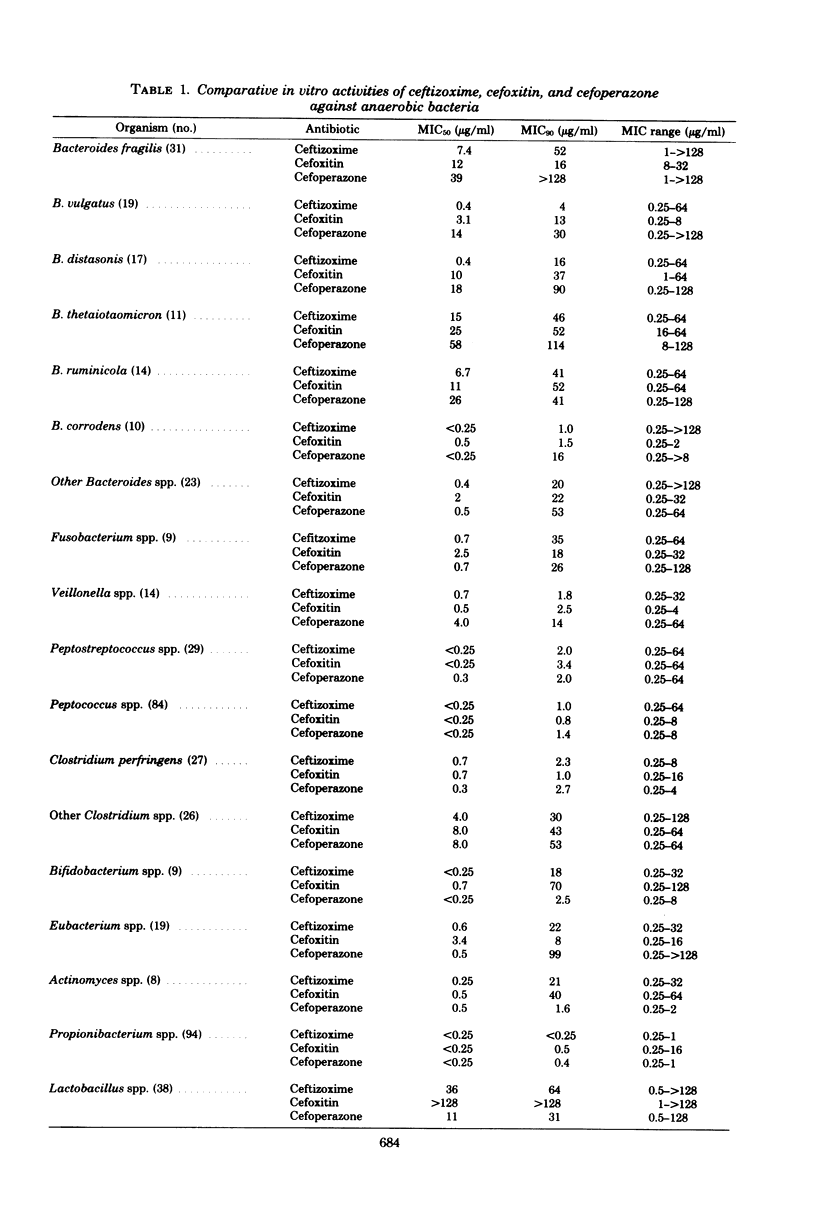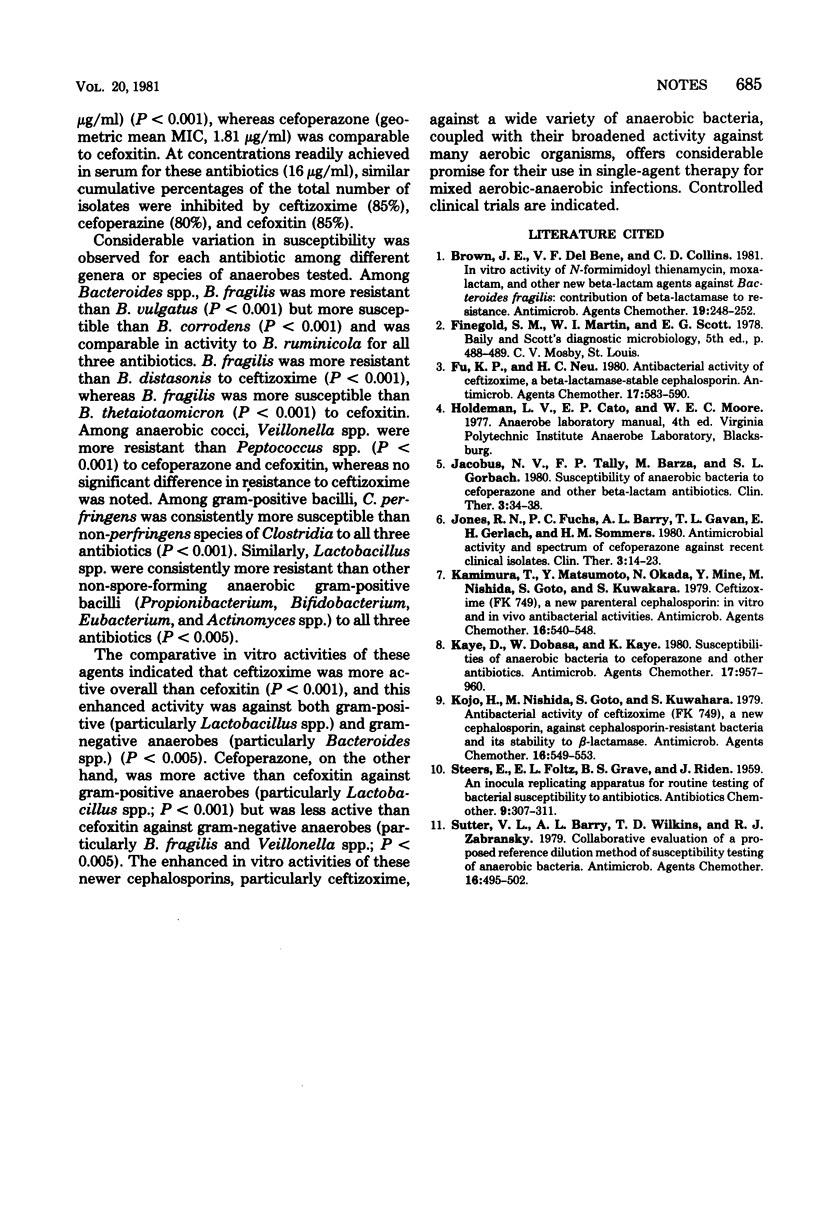Abstract
Against 482 obligate anaerobes studied by the agar dilution technique, ceftizoxime was significantly more active than both cefoxitin and cefoperazone (P less than 0.001); the latter two agents were comparable in activity. The enhanced activity of ceftizoxime, as compared with the activity of cefoxitin, was against both gram-positive and gram-negative anaerobes (especially Lactobacillus and bacteroides spp). Cefoperazone, however, was more active than cefoxitin against gram-positive anaerobes (particularly Lactobacillus spp.) but was less active than cefoxitin against gram-negative anaerobes (particularly Bacteroides fragilis and Veillonella spp.).
Full text
PDF


Selected References
These references are in PubMed. This may not be the complete list of references from this article.
- Brown J. E., Del Bene V. E., Collins C. D. In vitro activity of N-formimidoyl thienamycin, moxalactam, and other new beta-lactam agents against Bacteroides fragilis: contribution of beta-lactamase to resistance. Antimicrob Agents Chemother. 1981 Feb;19(2):248–252. doi: 10.1128/aac.19.2.248. [DOI] [PMC free article] [PubMed] [Google Scholar]
- Fu K. P., Neu H. C. Antibacterial activity of ceftizoxime, a beta-lactamase-stable cephalosporin. Antimicrob Agents Chemother. 1980 Apr;17(4):583–590. doi: 10.1128/aac.17.4.583. [DOI] [PMC free article] [PubMed] [Google Scholar]
- Jacobus N. V., Tally F. P., Barza M., Gorbach S. L. Susceptibility of anaerobic bacteria to cefoperazone and other beta-lactam antibiotics. Clin Ther. 1980;3(Spec Issue):34–38. [PubMed] [Google Scholar]
- Jones R. N., Fuchs P. C., Barry A. L., Gavan T. L., Gerlach E. H., Sommers H. M. Antimicrobial activity and spectrum of cefoperazone against recent clinical isolates. Clin Ther. 1980;3(Spec Issue):14–23. [PubMed] [Google Scholar]
- Kamimura T., Matsumoto Y., Okada N., Mine Y., Nishida M., Goto S., Kuwahara S. Ceftizoxime (FK 749), a new parenteral cephalosporin: in vitro and in vivo antibacterial activities. Antimicrob Agents Chemother. 1979 Nov;16(5):540–548. doi: 10.1128/aac.16.5.540. [DOI] [PMC free article] [PubMed] [Google Scholar]
- Kaye D., Kobasa W., Kaye K. Susceptibilities of anaerobic bacteria to cefoperazone and other antibiotics. Antimicrob Agents Chemother. 1980 Jun;17(6):957–960. doi: 10.1128/aac.17.6.957. [DOI] [PMC free article] [PubMed] [Google Scholar]
- Kojo H., Nishida M., Goto S., Kuwahara S. Antibacterial activity of ceftizoxime (FK 749), a new cephalosporin, against cephalosporin-resistant bacteria, and its stability to beta-lactamase. Antimicrob Agents Chemother. 1979 Nov;16(5):549–553. doi: 10.1128/aac.16.5.549. [DOI] [PMC free article] [PubMed] [Google Scholar]
- Sutter V. L., Barry A. L., Wilkins T. D., Zabransky R. J. Collaborative evaluation of a proposed reference dilution method of susceptibility testing of anaerobic bacteria. Antimicrob Agents Chemother. 1979 Oct;16(4):495–502. doi: 10.1128/aac.16.4.495. [DOI] [PMC free article] [PubMed] [Google Scholar]


